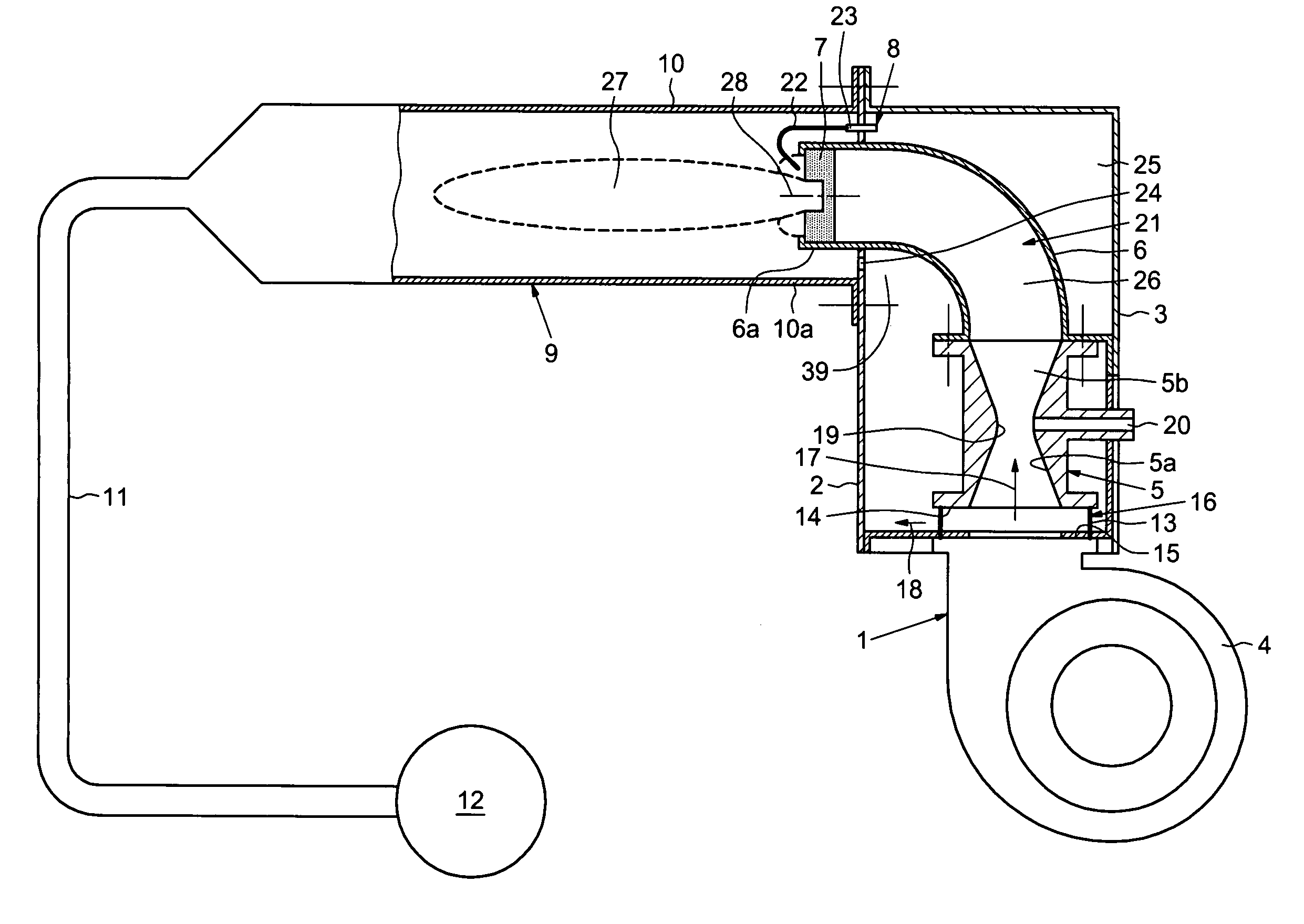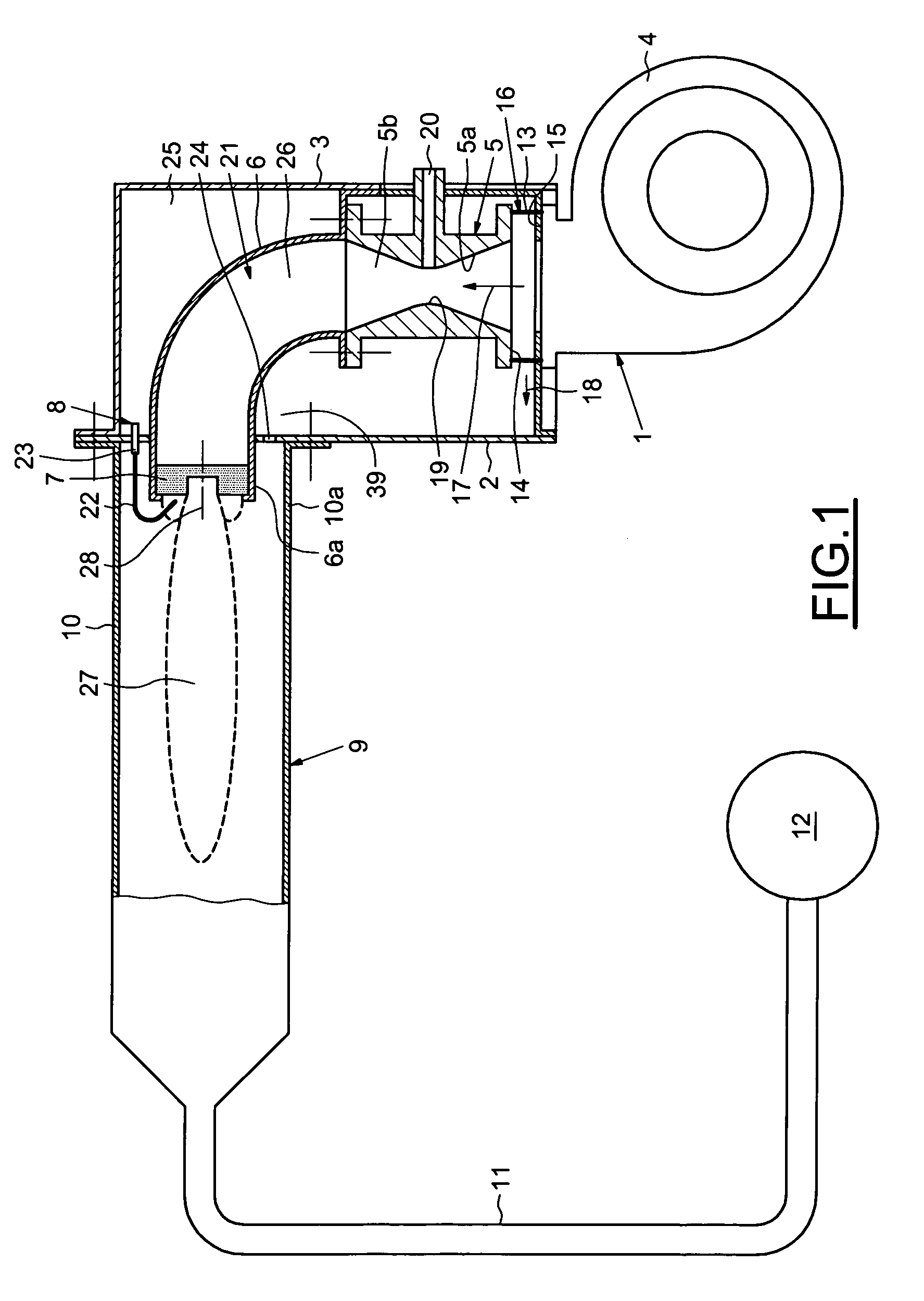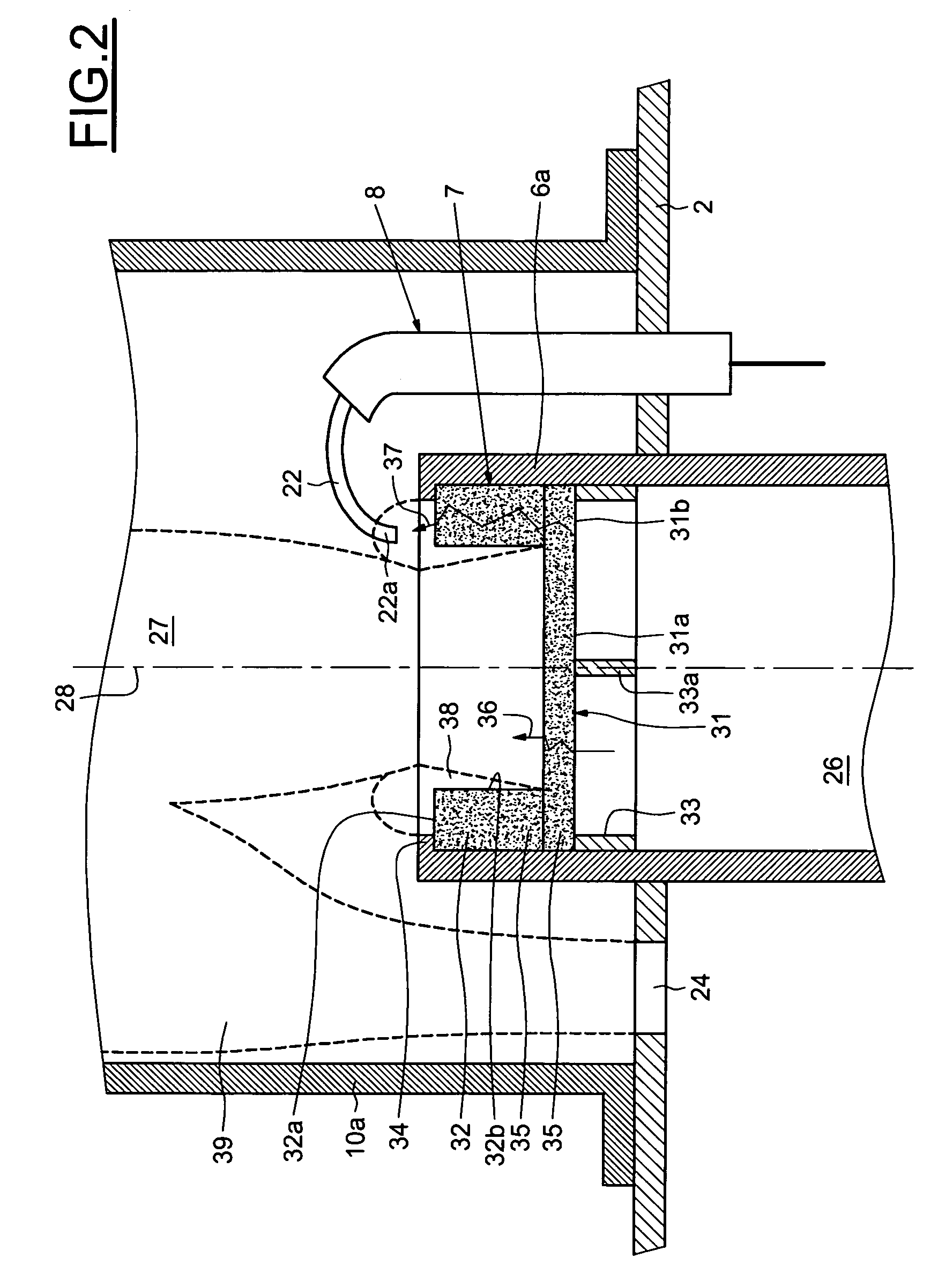Gas burner for oven
a technology of gas burner and oven, which is applied in the direction of combustion process, heating fuel, application, etc., can solve the problems of limited thermal power, vibration and noise in the oven, mechanical energy of the combustion gas from the burner,
- Summary
- Abstract
- Description
- Claims
- Application Information
AI Technical Summary
Benefits of technology
Problems solved by technology
Method used
Image
Examples
Embodiment Construction
[0032]As illustrated in FIG. 1, a burner comprises a propulsive assembly 1 fixed to a fixing plate 2 and surrounded by a box 3. The propulsive assembly 1 comprises a fan 4, a venturi device 5, an upstream sleeve 6 and a retention device 7 for a flame 27. The fixing plate 2 also receives an ignition device 8 and a heat exchanger assembly 9. The heat exchanger assembly 9 successively comprises a combustion pipe 10 fixed to the fixing plate 2, at least one heat exchanger tube 11 and an outlet 12.
[0033]The fan 4 is of the centrifugal type and pushes the sucked-up air through the venturi device 5. The venturi device 5 is fixed rigidly opposite, and at a distance from, the outlet orifice of the fan 4. The bypass connecting device 16 comprises crosspieces 13, for example in the form of small pillars or washers which are pushed between an inlet plate 14 of the venturi device 4 and an outlet plate 15 of the fan 4. The mechanical connection between the venturi device 5 and the fan 4 is rigid ...
PUM
 Login to View More
Login to View More Abstract
Description
Claims
Application Information
 Login to View More
Login to View More - R&D
- Intellectual Property
- Life Sciences
- Materials
- Tech Scout
- Unparalleled Data Quality
- Higher Quality Content
- 60% Fewer Hallucinations
Browse by: Latest US Patents, China's latest patents, Technical Efficacy Thesaurus, Application Domain, Technology Topic, Popular Technical Reports.
© 2025 PatSnap. All rights reserved.Legal|Privacy policy|Modern Slavery Act Transparency Statement|Sitemap|About US| Contact US: help@patsnap.com



